Visit St Andrews if you’re mad about golf, but make time for Kate and Wills nostalgia too
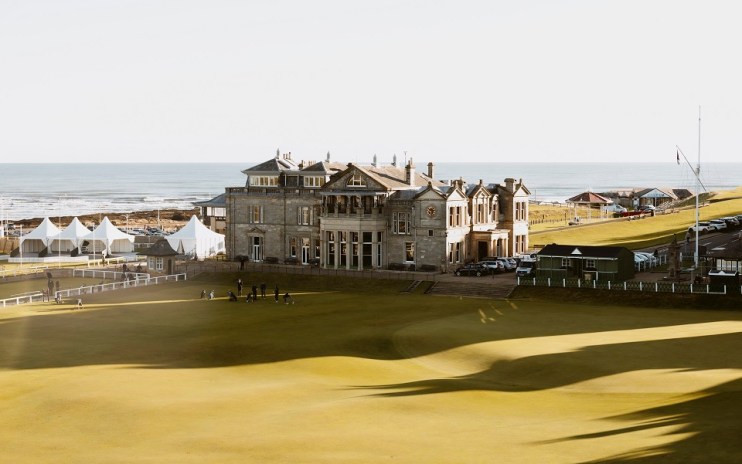
Adam Bloodworth visits St Andrews, checking into the newly-refurbished Rusacks, the hotel overlooking The Open’s 18th hole on the Old Course
Imagine waking up in your hotel room, pulling a jaunty yawn-stretch, opening the curtains and revealing the finishing line of one of the most famous sporting tournaments in the world.
There aren’t many hotels offering such privileges. Centre Court doesn’t offer rooms overlooking the net, and I don’t believe the Olympic Stadium touted penthouses with panoramas of the 500-metre finishing line. This is where Rusacks St Andrews, newly refurbished for the 150th anniversary of The Open golf tournament, waves its golden ticket.
Settling into my room, replete with tartan carpets, oil paintings of famous golfers and a bed embellished with a thick emerald throw – the type I’d imagine Scottish nobility spend between November and April hiding under – the concierge throws open the curtains to expose the Old Course, just two metres outside my window.
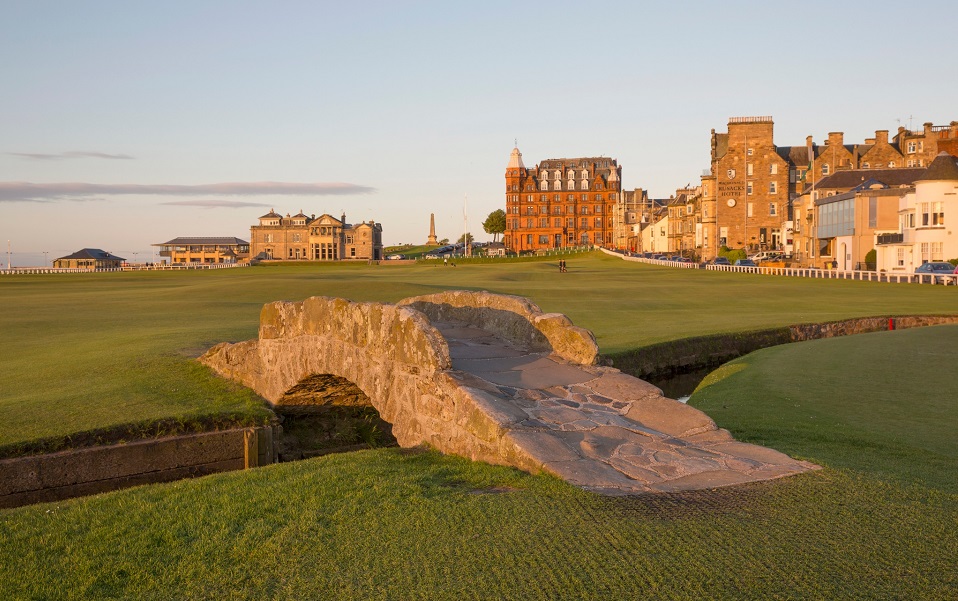
First played on in the 1400s, the course is probably the most famous, and most magnificent, golf course in the world. It was here where in 2005 a retiring Jack Nicklaus waved goodbye to the sport on the Swilcan Bridge; a captured moment of history which decorates the back of some five pound notes. I peer to my left and can see that exact bridge; to the right, the famous 18th hole where so many tense golfing moments have been played out.
“This is the best view in St Andrews,” says my concierge, gesturing at the arm chair by the window of my room. It’s hard to argue with that: from here I can take in the action on the Old Course, and adjacent to that, the thrashing white waves of the North Sea on West Sands Beach, a lengthy stretch of white sand where Chariots of Fire was once filmed.
American tourists who’ve spent their lifetimes lusting over St Andrews and Scotland in general dream about checking into rooms like these. Some lucky ones do: 90% of check-ins at Rusacks are American, hotel manager Seamus Coen tells me over a stiff but gently sweet old fashioned from the hotel’s new rooftop bar-restaurant.
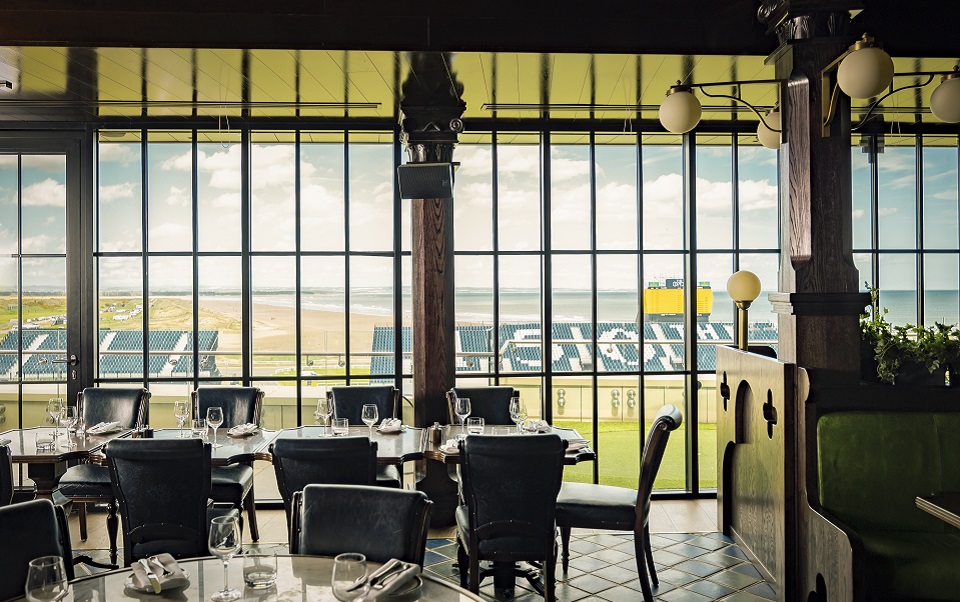
Twelve floors up, it strikes me that this is a newly created view: never before has this most cherished course been seen from so high up. From here, the course’s undulations appear like the surface of a well-glazed pie. Dressed in rainforest green leather and dark wood, the restaurant is the obvious place to stop for an Aberdeen angus steak, naturally, as well as innovative spins on local seafood, and an array of whiskies, gently spun whisky cocktails and fine British wines (reds from further afield, of course.)
If you’re so lucky as I was, pair whisky with the gleaming sunset over coast and course. On the balcony, you’ll be toasting alongside father-son duos, and groups of American men, recalling the first time they hit a ball on the Old Course.
If you are dead-set on a round where it all began, be prepared to put in some serious graft: single visitors queue from the night before for a handful of solo passes handed out at sunrise. “They’re not drunk, or they’re not just drunk,” my guide Andy tells me of those that queue in hope. There’s also the old course ballot, with a less-than favourable one-in-six chance of actually securing a round, at a cost of around £400 on these hallowed beachside lawns. Perhaps the easiest way is to look up St Andrews Links offers and packages, some of which include overnight stays and a round.
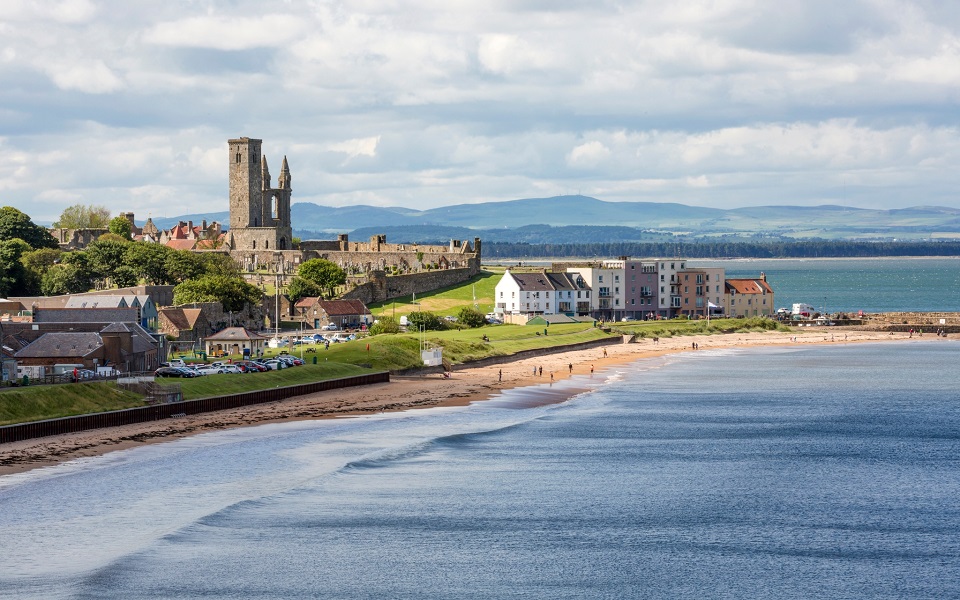
If hearing stories of desperate attempts to play on the Old Course is more fun than the idea of trying to play yourself, St Andrews Links which hosts the Old Course has six other courses which intertwine with the Old Fella, so much so that only die-hards would know the difference.
My shrewd discovery was the Himalayas putting club, with a hefty £4.20 fee per round. At hole fourteen, standing with club in hand, I gazed up at the stands in place for The Open, just weeks away when I visited, and felt as if I was playing on the Old Course itself, the fringes of which are just two or three metres away from this point of the Himalayas. (A particularly boisterous swing would land your ball on the sacred grounds.) If all else fails, go here to have your Tiger Woods moment.
During dinner at Rusacks that night I bored my waitress Abby with my imagined Old Course swing. Sticking with the theme of escapism, she told me a favourite pastime of students at St Andrews University is breaking into the St Andrews Castle grounds at night, although she assured me that, of course, she’d never given the idea a second thought.
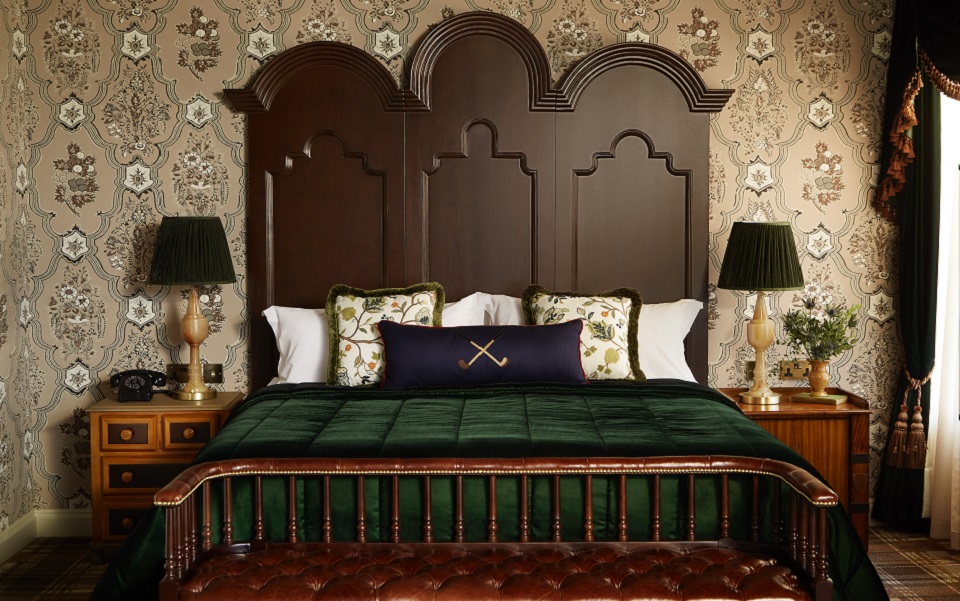
Later, I meandered through town for the ten-minute stroll up to the castle. I couldn’t spot where to break in – maybe I’ve tragically lost my student senses – but on the Castle Sands beach at the bottom of the cliff I spotted groups huddled under sizeable fires, laughing loudly in nature’s niftily crafted void below the town where students carry the party on into the small hours.
Visit St Andrews after dark and there isn’t much else to do, other than sit in the crevices of the beach. There are certainly no clubs, and that’s exactly how St Andrews likes it. Third only to Oxford and Cambridge, the University of St Andrews is prestigious, and students cater for over a third of the town’s 26,000 population. Rather than clash with the locals, there is a singular mindset here, one that appreciates a slower pace of life.
During the day, the 15th century university buildings – the uni is the third oldest in the English speaking world – lend the town an Oxonian feel, without the throngs of workers. In St Andrews, the only people moving fast are the tourists. Locals joke “St Andrews only has three roads,” an oversimplification which sums up why life here is so straight-forward. There’s time to take in everything over a couple of days, inclusive of whisky breaks and wandering through university quadrangles St Salvator’s and St Mary’s and to the cathedral ruins.
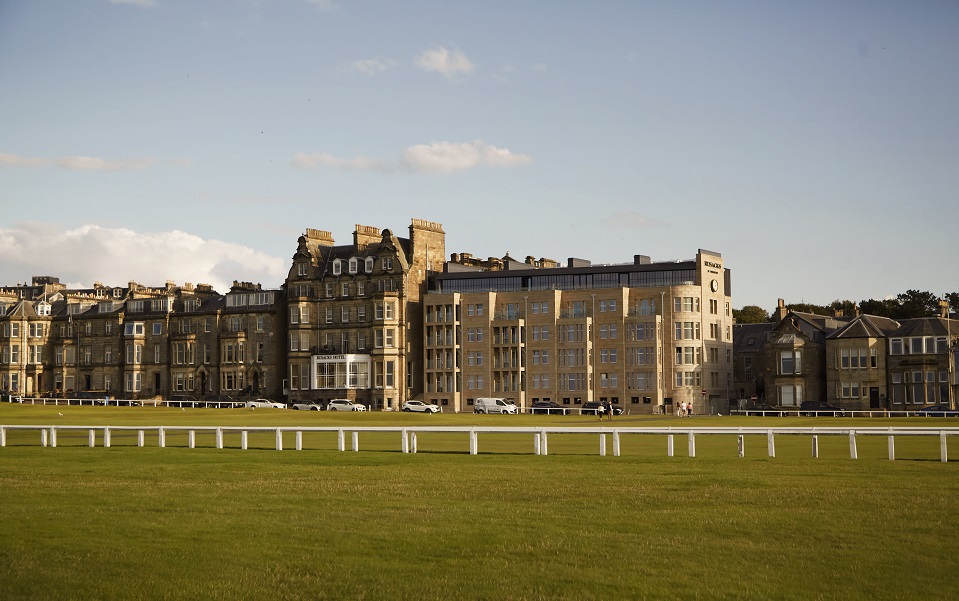
By night, visiting Bell Street’s beyond-midnight pubs it’s fun to imagine that perhaps it was here where Kate and Wills necked sambucas while dressed in chinos and plaid shirts while at university. The following morning I have lentil soup at Northpoint cafe on North Street, where a sign in the window proclaims “Where Kate met Wills for coffee.” Over the road in the window of an adjacent house another billboard reads “this is where Will first boned Kate,” a tell-tale sign of how exasperated students are finding comedy in the perversity of royal tourism.
Curious about where Will might’ve actually first “boned” Kate, I had a quick Google and wandered to the couple’s old uni pad. It’s a minute’s walk from the Student’s Union, where VK punchbowls decorate tables and cocktails are £4.50. When I walked past their old pad, an upstairs window was cocked, and three young people were sat around watching TV. Downstairs, there’s an old wooden door with single glazing which clearly pre-dates the Kate and Wills era. Locals are ambivalent about the royals at best. One tells me: “Kate and Wills are an important, but small, part of our 800 year history.”
Way more cherished is Tom Morris, an 18th century working class hero who went on to win The Open four times. He’s a symbol of how golf in St Andrews is for everyone. Overlooking a stretch of the Old Course, I visit his eponymous restaurant for the Tom Morris whisky flight before I leave. I might not have played much golf, but this feels like teeing off in style.
Visit St Andrews yourself
Rooms at Rusacks St Andrews start from £328; LNER trains go from London to Edinburgh from £112; it’s an hour’s taxi to St Andrews
